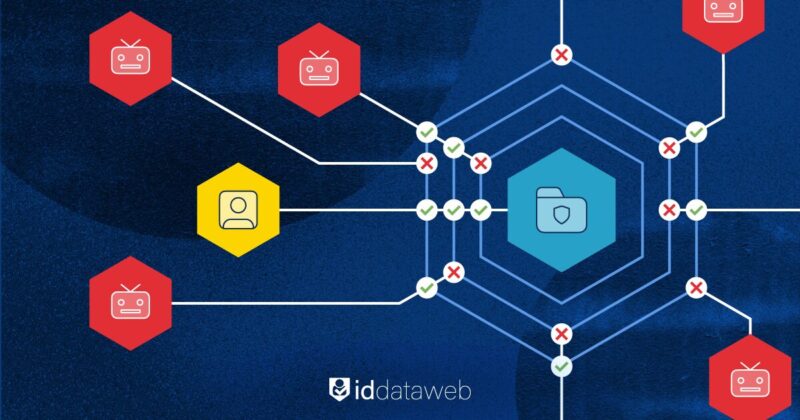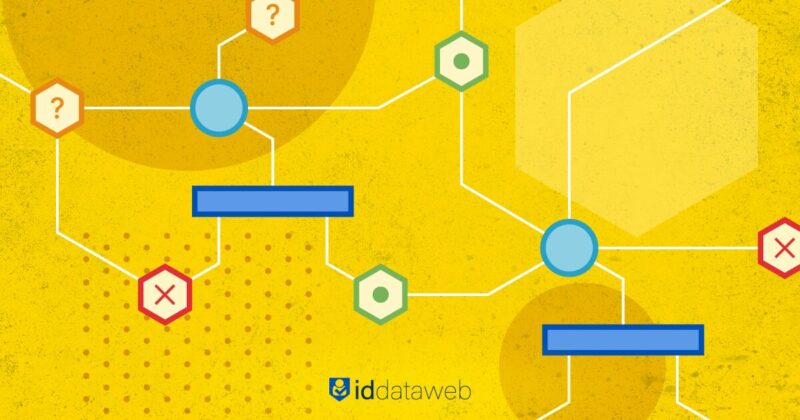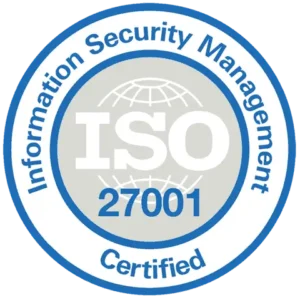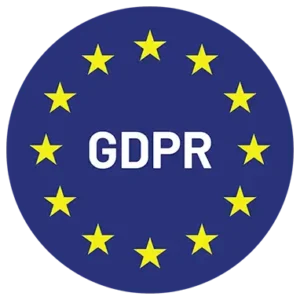Organizations today face unprecedented threats—not merely from outside attackers, but increasingly from within their own walls. Internal fraud, often executed through misuse of identity privileges, poses a distinct and serious cybersecurity risk. Excessive privileges, dormant accounts, and third-party access issues generate openings for exploitation.
According to a 2022 ACFE (Association of Certified Fraud Examiners) report, 42% of fraudsters exploited weak or nonexistent internal controls.
Understanding the underlying psychological and organizational structures that facilitate fraud is crucial. This is where the “Fraud Triangle” provides invaluable insight, especially regarding how identity and access management (IAM) limits opportunities for fraud.
Understanding the fraud triangle
The Fraud Triangle has three core elements: Pressure, Opportunity, and Rationalization. These factors create conditions that encourage individuals—whether employees or third-party partners—to commit fraud.
Cybersecurity professionals typically have influence over the “Opportunity” factor, yet it is important to recognize that even the best IAM controls may be ineffective if staff, vendors, or contractors are under severe Pressure to commit fraud.
- Pressure: Financial strain, unrealistic performance expectations, or personal crises create motives for fraud. Pressure can stem from mounting debts, family emergencies, or employment insecurities. An employee under the stress of failing to meet strict sales targets, for instance, may become desperate. In such an environment, even an individual with no prior history of unethical behavior might rationalize fraudulent activities.
- Opportunity: Weak internal controls, specifically related to identity and access, present chances for abuse. This element is where organizations have direct control. Practices like granting broad access privileges, failing to review permission levels, and not monitoring account usage all provide ample openings for malicious behavior.
- Rationalization: Perpetrators justify their actions with distorted ethics—claiming entitlement or downplaying consequences. Employees might think “I deserve this, given my underpaid overtime,” or “No one will miss this data if I copy it.”
Some insiders harboring intense financial Pressure will look for an Opportunity, then Rationalize their actions. Conversely, if your identity management is weak, presenting Opportunity, the fact that it’s “so easy to do” can become the rationalization itself.
How the fraud triangle operates in practice
Understanding each Fraud Triangle component in theory is helpful. Examining how it operates in real organizational settings, however, offers deeper clarity.
Consider an overworked accountant facing massive personal debts. This accountant encounters an Opportunity if their finance department has not implemented proper segregation of duties and if they have access to initiate and approve financial transactions. They soon find themselves Rationalizing that “just one small transfer” from a dormant account can solve their immediate crisis.
Pressure and Opportunity might not suffice unless the individual can morally or mentally justify their actions. That justification—Rationalization—completes the triangle. The presence of a single neglected identity control, such as an orphaned account or a shared password, can unleash a significant breach once an employee or contractor rationalizes wrongdoing.
One reason the Fraud Triangle remains so relevant is that it underscores human vulnerabilities. Even an honest individual may become compromised by life events.
In cybersecurity terms, no technical safeguard alone can prevent employees from feeling pressured. Nor can technology alone address the internal justifications people concoct. However, proper identity and access controls, combined with an ethical organizational culture, limit the avenues for wrongdoing and minimize the likelihood that a rationalizing employee finds the easy path to misconduct.
Real-world impacts of internal identity risks
Real-world examples underscore the breadth and severity of insider threats. This section illustrates how internal fraud can manifest across multiple industries.
In the healthcare sector
In a notorious breach, Montefiore Medical Center in New York faced insider-driven fraud. An administrative clerk printed thousands of confidential patient records, subsequently sold at minimal prices on black markets. This scenario exemplifies internal exploitation driven by simple yet fatal flaws:
- Unrestricted access levels to sensitive information.
- Absence of identity-driven monitoring systems.
The breach undermined patient trust and led to extensive identity theft alongside financial losses. Implementing least privilege policies and anomaly detection mechanisms could have mitigated or even prevented the incident. The Montefiore case also exposed how a rogue insider might collude with external criminals, compounding the damage.
Healthcare entities have a duty to safeguard sensitive patient data under HIPAA (in the United States) and comparable regulations in Europe, such as GDPR. Non-compliance invites financial penalties, reputational harm, and possible legal consequences. Thus, insider threats jeopardize not only patient confidentiality but also an organization’s legal and financial standing.
In the aviation industry
The aviation sector recently witnessed significant breaches involving third-party vendor platforms.
The aviation sector recently witnessed significant breaches involving third-party vendor platforms. American Airlines and Southwest Airlines encountered security breaches via the Pilot Credentials recruiting portal. Attackers accessed pilot applicant data, exploiting the trust placed in third-party systems. According to a SecurityScorecard report, aviation enterprises regularly underestimate or overlook third-party risks.
These incidents highlight how Opportunity arises whenever external users or contractors gain privileged or semi-privileged access to internal data. Although this example featured an external hack, it is akin to insider misuse once attackers control valid credentials. For cybersecurity professionals, the distinction between an internal user and a compromised external account can be negligible in terms of the potential damage.
- Takeaway: IAM strategies must extend beyond internal identities to third-party users.
- Recommendation: Engage in rigorous monitoring and vetting processes to prevent breaches via trusted external entities. Any flaw in vendor-side identity controls ultimately becomes your organization’s vulnerability.
In financial services and banking
Banks regularly combat insider threats leveraging privileged identity access. JPMorgan Chase faced a scenario where a personal banker sold sensitive client data, facilitating unauthorized account withdrawals. Similarly, Fifth Third Bank experienced large-scale fraud when a teller collaborated externally, opening fraudulent accounts and initiating illicit transactions.
Fraudsters often rely on employees who encounter financial or personal Pressure. These individuals realize that their privileged access translates into direct Opportunity. Banking institutions that fail to apply robust monitoring methods may never detect anomalies, allowing misconduct to escalate.
Industry lessons:
- Identity privileges require consistent reviews and strict monitoring: Over time, employees may accumulate more access privileges than necessary if no one reviews entitlements regularly.
- Comprehensive IAM frameworks encourage proper segregation of duties: Limiting the overlap of roles makes it more difficult for an insider to single-handedly execute fraud.
- Behavior analytics reveal suspicious activity: If a teller opens several new accounts and each account quickly encounters questionable transactions, real-time alerts can prompt internal investigations.
In the Insurance sector
Insurance organizations regularly interact with external consultants or contractors. At Sentry Insurance, a contracted computer programmer exploited this trust, stealing data from over 112,000 customers. The ease with which this individual accessed extensive confidential information highlights severe lapses in IAM oversight.
Many insurance companies rely on external professionals for claims processing, software development, or data analytics, which grants them partial or full access to sensitive client files. Under the Fraud Triangle framework, pressure might have compelled this contractor to misuse data for financial gain or other motives. Because oversight was apparently minimal, they found ample opportunity.
Industry lessons:
- Restrictive, context-based access to data.
- Rigorous identity activity monitoring to detect anomalies quickly.
- Periodic re-certification of third-party user accounts.
Workforce IAM as an actionable solution
When referring to workforce IAM, we address the identities of all employees, contractors, and sometimes business partners with varying levels of system access. Organizations that invest in workforce IAM solutions aim to unify and streamline how they manage access rights, login credentials, and authentication processes for their entire workforce.
- Single Sign-On (SSO) and Multi-Factor Authentication (MFA): SSO reduces friction and centralizes authentication events, while MFA adds a crucial security layer to limit stolen credential misuse. Although a disgruntled employee might still have legitimate credentials, requiring them to step through multi-factor prompts at unusual times can deter or detect malicious attempts.
- Identity Lifecycle Management: From onboarding to offboarding, each employee’s identity must be tightly controlled. Role assignments and privilege levels should be defined upon hiring, adjusted when responsibilities change, and fully revoked upon termination. Orphaned accounts—those left active after an employee departs—present massive windows for fraud.
- Privileged Access Management (PAM): High-level privileges, such as those belonging to system administrators or executives, must be guarded carefully. PAM solutions require just-in-time access and session monitoring for critical operations. This ensures that privileged actions leave an auditable trail.
- Periodic Access Reviews: Through consistent audits, organizations confirm that employees retain only those permissions relevant to their roles. This step is fundamental to preventing “privilege creep,” which cumulatively increases opportunity.
Workforce IAM intersects with the Fraud Triangle by reducing the second element—Opportunity. When employees know that privilege use is monitored and that suspicious activities are subject to immediate scrutiny, rationalizations often unravel. Perceived ease of committing fraud diminishes, discouraging potential wrongdoers.
Least privilege reduces access risks
Adhering to the principle of least privilege reduces unnecessary access to critical data. Roles should be meticulously defined and continually reassessed. Segregation of duties further strengthens internal controls by ensuring no individual possesses conflicting permissions.
Example: In a healthcare setting, a billing clerk does not need full read-write access to patient diagnoses. Limiting them to billing records fosters data security. If that clerk attempts to query patient medical data, IAM systems should flag the request as suspicious.
IAM tools integrated with identity orchestration platforms significantly streamline these processes:
- Automated access certifications maintain control efficiency.
- Identity governance tools actively prevent toxic access combinations.
When roles and privileges are enforced automatically, Pressure and Rationalization might be present, but they are far less likely to align with an exploitable Opportunity.
Continuous monitoring identifies suspicious behaviors
Continuous monitoring of identity-related activities is crucial for rapid detection of fraud. Solutions like User and Entity Behavior Analytics (UEBA) establish user behavior baselines. They proactively detect deviations, flagging potential internal threats before severe damage occurs.
Identity Threat Detection and Response (ITDR) extends IAM capabilities. ITDR incorporates active monitoring and automated responses to suspicious activities, swiftly containing risks without disrupting legitimate business operations. If an employee who never accessed financial records suddenly downloads thousands of them after midnight, ITDR solutions can lock the account or prompt an investigation.
Additionally, logs from IAM systems feed data into Security Information and Event Management (SIEM) platforms. Cross-referencing these logs with other network events allows security teams to see the bigger picture. A data exfiltration attempt might stand out more starkly when correlated with an employee’s recent attendance record or a sudden spike in privileges.
Identity orchestration delivers contextual security
Identity orchestration provides a unified layer that integrates multiple identity-related signals from across an organization. Platforms like ID Dataweb correlate diverse data points—user location, device trust, recent activity patterns—to assess real-time risk dynamically.
The orchestration layer can also unify signals from partner IAM systems, such as Okta or Saviynt, ensuring consistent enforcement across different applications or environments.
Benefits of identity orchestration include:
- Real-time access adjustments based on contextual risk factors: If a credential is used from a high-risk IP, orchestration can automatically trigger a step-up MFA.
- Just-in-time privileges reduce persistent, unnecessary access: A system engineer might request elevated privileges for a maintenance task, which expire after completion.
- Adaptive authentication prompts additional verification dynamically when unusual patterns emerge. If a user typically logs in from New York but suddenly tries to access from Hong Kong at 3 AM, an immediate challenge can confirm authenticity.
Contextual security is particularly relevant for organizations with a globally distributed workforce or multiple external partners. By orchestrating policies across all identity touchpoints, security teams reduce friction for valid users while raising barriers for suspicious behavior.
Addressing rationalization with culture and oversight
Technology alone cannot remediate all forms of insider misconduct if individuals rationalize unethical actions under intense Pressure. Building an organizational culture that emphasizes transparency, fair treatment, and ethical accountability is key.
- Clear Policies: Documented codes of conduct help employees understand boundaries.
- Whistleblower Channels: Safe, anonymous ways to report suspicious behavior or personal struggles can reduce the secrecy that often precedes fraud.
- Ethics Training: Regular sessions remind staff that small compromises can escalate.
Incident response for internal threats
Incident response protocols tailored for internal threats ensure that responses to suspicious activities are prompt, appropriate, and effective. Many organizations design IR plans around external hacks, often neglecting the possibility that an authorized user might be the culprit.
Best practices:
- Predefine escalation paths: Who investigates insider alerts, and how do you ensure confidentiality?
- Preserve evidence: Insider incidents may lead to legal action, so collecting logs and system snapshots is essential.
- Communication protocols: Decide how to inform management, the board, or external regulators.
This preparedness helps limit potential damage and deters future fraudulent behaviors. Employees aware that the organization handles internal misconduct decisively may be less tempted to cross ethical lines.
Conclusion
Comprehensive IAM practices, supported by identity orchestration and continuous monitoring, form an effective strategy for mitigating internal risks. Organizations must move beyond conventional security models, acknowledging identity security as integral to their overall cybersecurity posture.
Key takeaways:
Pressure is often inevitable, yet robust identity security shrinks Opportunity and forces would-be fraudsters to reconsider their actions.
Maintaining continuous visibility over who has access to what resources is essential to detect or deter insider threats.
Workforce IAM unifies identity governance, authentication, and privilege management across the employee lifecycle, reducing the risk posed by orphaned or excessive accounts.
Ethical cultures supported by management help neutralize Rationalization, making employees less likely to justify malicious acts.
Incident response planning for insider cases ensures swift action and can prevent escalation once suspicious behavior arises.











